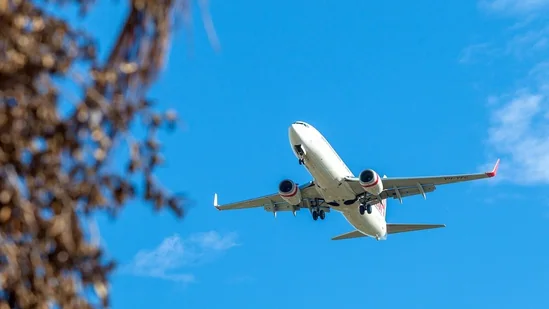Russian Plane With 50 On Board Crashes, Rescuers Find Debris On Fire

There was a catastrophe on Russia’s Far East early on the morning of July 23, 2025, when an Antonov An-24 plane carrying 49 passengers with five children crashed on approach to Tynda Airport in the Amur region. What was a normal regional flight turned into a disaster that has rocked the country and reminded the world of the vulnerable infrastructure behind air transport in remote areas.

A Lost Plane and a Devastating Discovery
The Angara Airlines plane was heading to Tynda, near the Russian-Chinese border. Halfway through landing—attempting a second approach in heavy fog and low visibility—the plane disappeared from radar. A desperate search-and-rescue effort ensued over rolling wooded hills. Several hours later, air rescue teams spotted the charred hulks on a barren hillside some 15 kilometers short of its destination.
Sadly, rescuers verified that there was no survivor. The wreckage smouldered when discovered, strewn about on a slope covered in pine trees. It was the start of a never-ending wait for verification and closure for the families of the 43 passengers and six crew onboard the aircraft.
Old Aircraft, Familiar Worries
Constructed in 1976, the Antonov An-24 was nearing 50 years old. Although it still had a valid airworthiness certificate—certified until 2036—itarses fresh concern over the safety of old Soviet aircraft still flying all over Russia’s huge, sparsely populated regions. The An-24, once a respected workhorse for domestic overland travel in the USSR, is now viewed by many experts as an anachronism, employing older technology.
The crash prompted renewed calls for criticism over Russia’s ongoing use of antique planes. Owing to international sanctions and restricted availability of newer Western-built aircraft or spares, most regional carriers fly ancient fleets. Maintenance is often a patchwork of indigenous fixes and old technology, especially in isolated regions such as the Amur region.
What Went Wrong?
Though there were official probes, initial findings indicate that the reason may be a combination of crew mistake and poor weather. The weather was also below par when it landed near Tynda, with dense fog and bad visibility across the area. State media and aviation officials attribute that the crew probably overestimated the ground in their second landing attempt.
The Russian Investigation Committee has already initiated an inquiry into possible violations of safety, and efforts are in place to retrieve the black boxes. But in a remote area where there are few facilities and strong weather conditions, the probe would last weeks or months.
The Human Cost
The true tragedy is not in technicalities, but in lost lives. This was not a tale of an ill machine; it’s mothers, fathers, children, and pilots who will never see home. There were passengers who were said to be going to see their relatives. There were those who were traveling on business or coming back from holiday. The fact that five children were killed infuses the tragedy with a depth that statistics cannot measure.
Local officials reported opening hotlines for bereaved families and sending counsellors to offer psychological help. But for much of Russia’s close-knit east, the agony of this tragedy will last longer than the news cycles.
A Wider Issue of Neglect
The crash highlighted a greater issue: Russia’s air infrastructure, particularly in its Siberia and Far East regions, is perilously underfinanced. Airports do not have up-to-date radar facilities, pilots fly without being able to see satellites, and rescue services take hours to respond to crash scenes because of terrain.
Critics say this is not simply an engineering problem—it’s a policy failure. The government for years vowed to modernize its regional air transport infrastructure, but substantive investment has been wanting. Under threat of sanctions and with growing isolation, Russia increasingly relies on technology from the past to operate vital lifelines across its cities.
What Comes Next?
As things unfold, blame will inevitably be the focus. Was there pressure to leave in inclement weather? Were the flight crew provided with all available information? Was the aircraft airworthy despite its age?
Apart from the blame game, there is a pressing need to reevaluate how Russia provides support for its national airlines. Greater regulation, pilot training in adverse weather, and most of all, fleet replacement are what experts call for. Patching up vintage aircraft is not sufficient. The risks are too great.
For the time being, at least, though, the attention is on mourning and recovery. Emergency personnel toil day and night to recover bodies and identify the victims. Tributes are already starting to pour in nationwide with many people praising the gallantry of the crew and lamenting the loss of young lives.
A Somber Wake-Up Call
The Tynda crash is not unique—it’s a wake-up call to how much further we have to go in ensuring aviation safety everywhere, not just in international centers. Every region, no matter how remote, deserves strong infrastructure, well-maintained aircraft, and well-supported flight crews.
While the country grieves, it is wished that this tragedy will not only evoke sorrow but also transformation. That no family in any other corner of the world should lose a loved one merely because a plane was old, the weather was bad, or the system was flawed.




